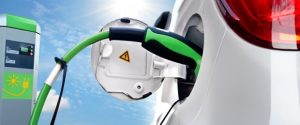 There is no doubt that we are on the path towards electrification. Wood Mackenzie’s recent analysis of mobility transition shows that, depending on where they are driven, electric vehicles use up to 67 per cent less greenhouse gas emissions than conventional gasoline cars on a well-to-wheel basis. As such, they have a critical role to play in a decarbonised economy. Nearly every big automotive company and government has set out ambitious plans for electric vehicles (EVs), but the important question is whether the associated timelines are realistic?
There is no doubt that we are on the path towards electrification. Wood Mackenzie’s recent analysis of mobility transition shows that, depending on where they are driven, electric vehicles use up to 67 per cent less greenhouse gas emissions than conventional gasoline cars on a well-to-wheel basis. As such, they have a critical role to play in a decarbonised economy. Nearly every big automotive company and government has set out ambitious plans for electric vehicles (EVs), but the important question is whether the associated timelines are realistic?
For example, the idea of an endless supply of metals for millions of EVs globally has left us scratching our heads. The current generation of batteries will certainly be used for the next wave of EV models but post 2025, there will be a shortage of lithium, nickel and cobalt. Higher raw material prices can incentivise new metals production to some extent but this takes time — it can often take up to 10 years to bring a new operation online. And, of course, a high raw materials price environment raises the issue of battery costs.
Improved charging infrastructure and recycling have the potential to ease some of the pressure on raw materials supply. However, access to an increased number of faster charging points doesn’t necessarily mean consumers will flock to EVs with smaller batteries. Similarly, significant volumes of recycled material are, at the very best, a decade away.
The solution has to be a technological one. Incremental increases in energy density mean less metal is required per kilowatt hour. We already see this improvement, however new chemistries and technologies can offer step changes in energy density that just might keep EV targets on track.
Battery scientists have been working on improving lithium-ion energy density for decades and one way of doing this is to change cathode chemistries. The EV industry appears to have settled on a few key chemistries for now, as they offer the best combination of safety, cost and performance: LFP (lithium iron phosphate), NCA (nickel, cobalt aluminium) and NMC (nickel manganese cobalt).
In its current form, lithium-ion technology is approaching its theoretical limit. To drastically reduce the metal requirements of an EV battery, a metamorphosis in energy density is required. For this to become a reality, a new approach is being developed — the solid state battery. By replacing the liquid electrolyte in a battery with a solid one, metallic lithium can be used as the anode. This means energy densities could potentially double from those of current technologies, with the added bonus of being inherently safer.
Source: “Speed Bumps on The Road to Electrification”, Financial Times
